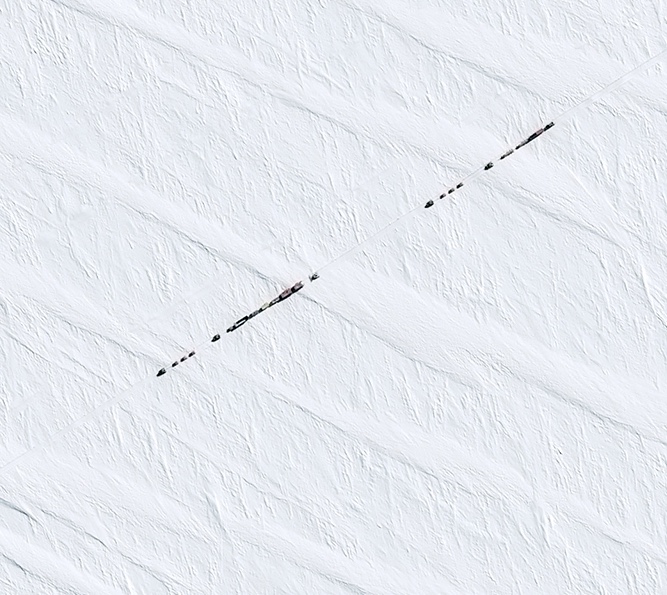Antarctic Lifeline Visible from Space (Photo)

A thin black line against a sea of white is all that connects Antarctica's Concordia research station to life.
This line, captured in a sobering satellite image, is a convoy of heavy-duty tractors pulling tons of fuel, food and equipment to one of the most isolated places on Earth. According to the European Space Agency (ESA), France's Pleiades satellite captured this view of the convoy from orbit at 435 miles (700 kilometers) above the icy surface.
Concordia research station is known as the "remotest base on Earth." It's so far from other humans — 372 miles (600 km) from the nearest base, Vostok in Russia — that it's more remote than the International Space Station, according to the ESA. (The ISS orbits at an altitude of between 205 and 270 miles, or 330 to 435 km.)
The station is located on the Antarctic Plateau at an elevation of 10,499 feet (3,200 meters). Despite the snow and ice, Antarctica is the largest desert on the planet, and the air at Concordia is extremely dry. It's also extremely cold: The yearly average temperature is minus 58 degrees Fahrenheit (minus 50 degrees Celsisu), according to the ESA, and lows can dip to minus 112 degrees F (minus 80 degrees C). [Images: Life at Concordia Research Station]
It takes 10 days for a convoy like this to travel from Dumont d'Urville on the coast to Concordia, according to the space agency. After three days of unpacking as much as 330 U.S. tons (300 metric tons) of supplies, the convoys return to the coast, a trip that takes about eight days, traveling faster as they descend the plateau.
Research at Concordia station depends on the isolation found there. The ESA sends crews to study the effects of isolation, sensory deprivation and close quarters on human psychology, mimicking the effects of long-distance space travel.
Getting supplies to the base is no picnic, either. It's an 807-mile-long (1,300 km) journey from the coast to Concordia. ESA writer Didier Schmitt described taking part in this convoy run on the ESA website. With only a few hours' practice driving a 24-ton (22 metric tons) tractor, Schmitt joined the most recent convoy to the base.
Get the world’s most fascinating discoveries delivered straight to your inbox.
"During the first snowstorm, I felt what it is to work in such extreme conditions," Schmitt wrote. He called the experience a "slow-motion Mad Max adventure."
Original article on Live Science.

Stephanie Pappas is a contributing writer for Live Science, covering topics ranging from geoscience to archaeology to the human brain and behavior. She was previously a senior writer for Live Science but is now a freelancer based in Denver, Colorado, and regularly contributes to Scientific American and The Monitor, the monthly magazine of the American Psychological Association. Stephanie received a bachelor's degree in psychology from the University of South Carolina and a graduate certificate in science communication from the University of California, Santa Cruz.



